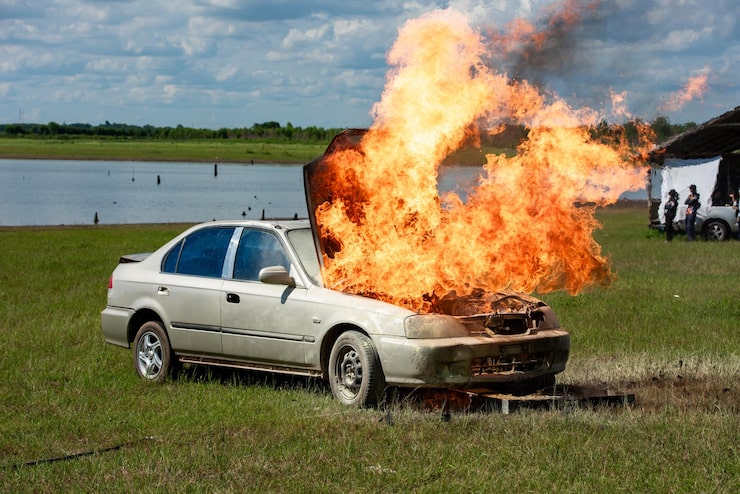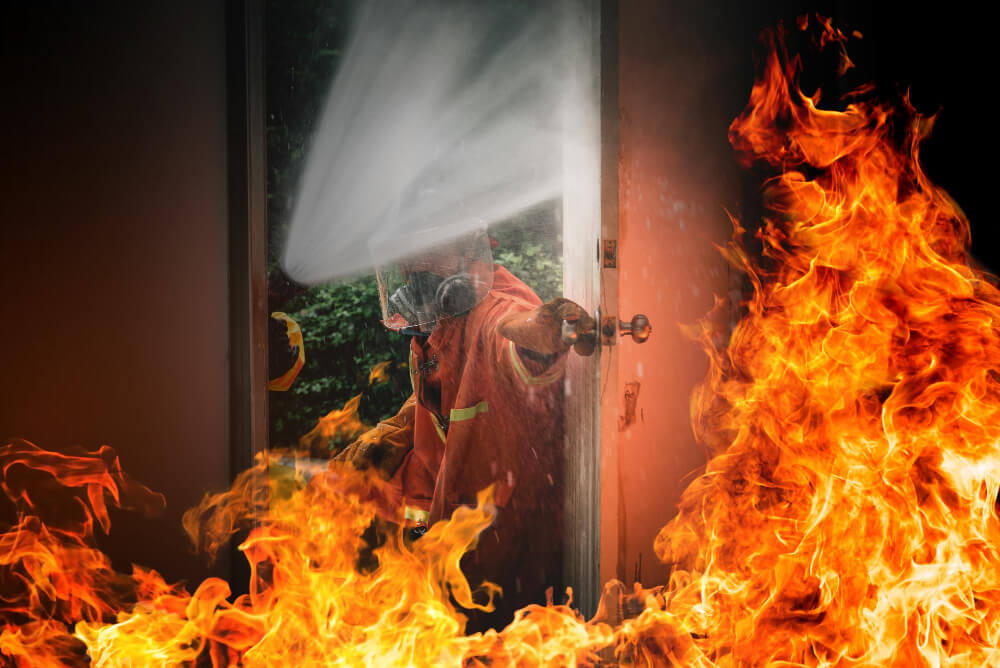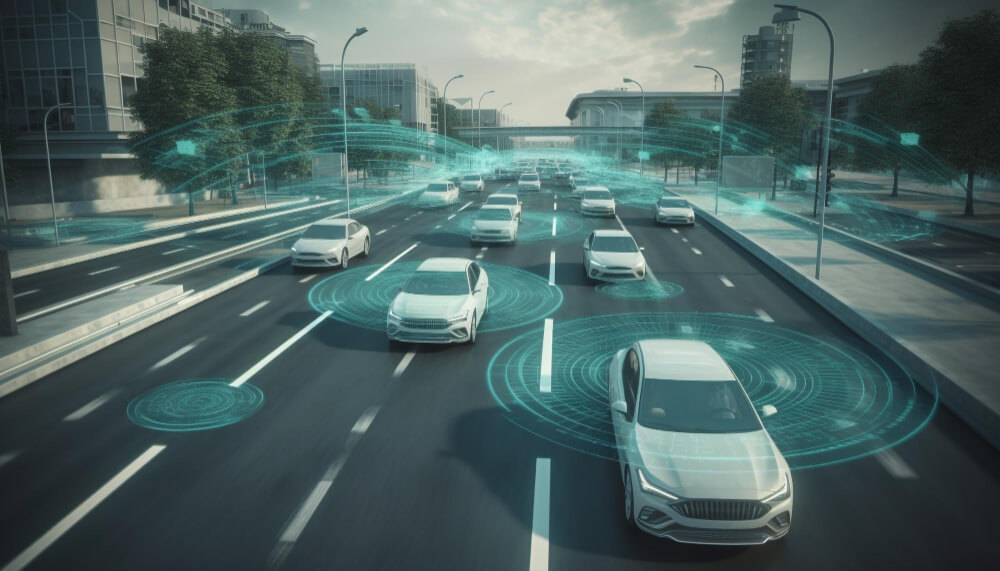
Advancing Science in Automotive Fire Safety
Rapid mobility is contingent on aggressive automotive fire safety and data-driven vehicle risk management practices. Car fires, whether caused by engine failure or cutting-edge battery packs, are dangers that science can now anticipate and negate (NFPA Journal, 2024; Fire Safety Journal, 2025). A series of studies in combustion dynamics, fire suppression chemicals, and telematics attests that the confluence of sensing with intelligent intervention revolutionizes the safety paradigm completely. Auto Burn Stop represents this change, providing intelligent systems that marry sensors, microprocessors, and fire-suppressing materials. This article explores how predictive vehicle risk management can propel transport by enabling vehicle fire safety. With technology like Auto Burn Stop behind it, science no longer contains; it halts the spread. For makers, including vehicle fire safety in platforms guarantees compliance, whereas fleets that use vehicle risk management reduce downtime and risk. Auto Burn Stop, auto fire protection, and car threat management are collectively the progressive thinking cutting edge of automobiles of tomorrow.
Scientific Foundations of Fire Prevention
Fire chemistry is crucial to automotive fire safety. Combustion Science and Technology research (2025) indicates that most automotive fires start from fuel-air mixtures, wiring issues, or battery venting. Addressing these issues scientifically, engineers develop specific suppression methods. With this evidence, Auto Burn Stop deploys sensors over risk areas. In-built vehicle risk management models analyze data streams, balancing probabilities of ignition. This shifts automotive fire safety from reactive to predictive. Incorporating physics-based models guarantees precise detection while Auto Burn Stop translates findings into real-time action. For fleets, implementing vehicle risk management delivers data-driven dashboards that reveal trends in hundreds of vehicles. Each incident reinforces automotive fire safety policy, enhances predictive maintenance, and builds trust. In this loop, Auto Burn Stop guarantees that what science discovers in labs is implemented consistently on roads, making vehicles safer under all operational conditions.
Engineering Solutions in Vehicle Systems
Scientific design is the bedrock of automobile fire safety sector. Pipe routing, tank location, and operation of valves dictate where fire extinguishing agents travel to reach hotspots. Auto Burn Stop engineers match materials science and control logic to maximize delivery. Vehicle risk management systems monitor past occurrences of fires in parallel, which fuel design improvement. It is a self-reinforcing cycle that makes automotive fire safety responsive and tested. For instance, high-temperature alloys piping resists abusive stress failure, and verification of classifiers enables valves to open only after microprocessors approve. With data analytics combined with engineering, vehicle risk management is a dynamic science making auto fire safety. Each design optimization is enhancing auto fire safety, and each incident documented is enhancing predictive modeling. In reality, Auto Burn Stop is one such synthesis: a process in which engineering accuracy and risk information converge, yielding measurable benefits to automobile risk management and innovative safety technologies.
Role of Data and Predictive Analytics
The driver of new vehicle risk management is data. Ongoing voltage, temperature, and chemical release measurement offers the evidence base to predict. A piece of research (Journal of Safety Analytics, 2025) finds predictive models cutting the rate of incidents by 70%. Auto Burn Stop contributes to the system with raw data from its detection and suppression system. Automotive fire safety is improved because real-time feedback closes the gap between theory and practice. Vehicle risk management deployment for fleet operators enables them to schedule maintenance, reroute, and lower downtime cost. The benefit is the supply of auto fire safety as a data platform component, making safety a quantifiable value. Data sets in Auto Burn Stop accumulate cumulative intelligence over time while keeping vehicle risk management and science knowledge intact. This internally consistent process reinforces safety precautions, proactive fire prevention a quantifiable business advantage rather than an after-the-fact response cost.
Regulatory Standards and Compliance Pathways
Governments are implementing stricter requirements for automotive fire safety, and systems must prove performance. CSA, UL, and Transport Canada regulations necessitate rigorous live-fire testing. Auto Burn Stop offers the documentation and evidence authorities require. Manufacturers demonstrate compliance using systematic reporting, and fleets utilize vehicle risk management software to establish responsibility. Combining these approaches guarantees automotive fire safety meets regulatory and operational requirements. With vehicle risk management incorporated, companies can record history of incidents, test results, and predictive scores. Compliance science becomes reproducible, transparent, and measurable. According to academic research (ScienceDirect, 2025), aggressive regulation stimulates innovation, encouraging manufacturers to produce more intelligent solutions. In this context, Auto Burn Stop has a competitive edge, as its solution integrates proven suppression with predictive analysis. Therefore, motor risk management and automotive fire safety evolve into not only safety features but also business differentiators.
Integration with Connected Mobility Ecosystems
Connectivity forms automotive fire safety global intelligence webs. Auto Burn Stop provides incident information to relief centers through GSM and GPRS networks. Vehicle risk management dashboards utilized by fleets monitor cars in real-time, bringing together suppression and telematics. Motor vehicle fire safety is improved through connectivity with instant intervention and learning between platforms. As more information come in, predictive models refine risk contours, increasing the accuracy of vehicle risk management. Every logged incident, no matter how minor or major, is part of a feedback loop. Regulators, insurers, and operators see automotive fire safety operate at scale. Auto Burn Stop in practice keeps this networked chain in place, so vehicle risk management does not stay siloed on individual vehicles but gets distributed over fleets and even geographies. This convergence of science results in safer roads, quicker response, and ongoing learning across the mobility ecosystem.
Conclusion
The mobility of transportation in the future is contingent on bringing automotive fire safety and vehicle risk management as fundamental infrastructures, not an afterthought. Scientific studies prove that predictive suppression and early monitoring quantifiably reduce risks (IEEE, 2025; NFPA, 2025). Auto Burn Stop makes these ideas a reality, making esoteric science become effective defense. Manufacturer compliance and consumer trust follow by having automotive fire safety installed. For fleets, vehicle risk management deployment is cost-saving, liability-reducing, and downtime-avoiding. For regulators, proven systems like Auto Burn Stop establish a new standard. The synergy is evident: automotive fire safety supplies the scientific foundation, vehicle risk management provides predictive management, and Auto Burn Stop performs seamlessly. Collectively, they are the model for tomorrow’s safe, smart transportation system.



